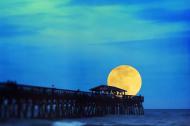



Nautical twilight occurs before astronomical twilight in the evening and before astronomical twilight in the morning when the sun's geometric center is between 6 and 12 degrees below the horizon.
Define dusk full#
Together, astronomical, nautical and civil twilight describe the time between sunset and full dark, and between full dark and sunrise. (Image credit: TWCARLSON/WIKIPEDIA/CC BY-SA 3.0.) (opens in new tab)Īstronomical twilight is the darkest of the three types of twilight. There are three types of twilight, depending on where the sun is in relation to the horizon. What's the difference between astronomical, nautical and civil twilight? Time and Date (opens in new tab)'s sun calculator gives exact time intervals for astronomical twilight for any location on a given date.The calculator from Cambridge in Colour (opens in new tab) provides the time that the sun reaches 18 degrees below the horizon anywhere on Earth - the after-dusk end or pre-dawn beginning of astronomical twilight.The National Oceanic and Atmospheric Administration (opens in new tab) (NOAA) hosts a calculator that will give the exact time of sunset and sunrise anywhere on Earth, but you may have to use NOAA's data (opens in new tab) to calculate astronomical twilight yourself.(opens in new tab) gives the exact start and end times of astronomical twilight for any location on a given date.If you're curious about astronomical twilight in your area, you can use one of several different calculators to find out when it will occur:

In fact, according to a 1931 paper published in the journal Geographical Review (opens in new tab), all three twilight conditions (civil, nautical and astronomical) take no longer than 2 hours and 11 minutes at the equator on the equinox. That's because the Earth spins at a slight angle compared to the plane of its orbit around the sun, creating the planet's seasons (opens in new tab) - during winter in the northern hemisphere, the north pole is angled away from the sun, so the sun lingers between 12 and 18 degrees below the horizon for a long time.Īt the equator, however, astronomical twilight is a much shorter period. However, astronomers wait for truly dark skies to observe galaxies, nebulas and anything else that creates diffuse and tricky-to-spot light sources.įor example, in winter close to the north pole, astronomical twilight can last for weeks, spanning from late October to mid-November and returning once again in January, wrote astronomer Joe Rao for. In higher latitudes, rare formations called noctilucent clouds are sometimes visible against a dark twilight sky. For casual observers and those in urban or suburban areas, the sky may appear fully dark, and viewers can get a good look at objects like planets and stars that appear as a bright point of light. When the sun is at or above 12 degrees below the horizon, it's no longer astronomical twilight.ĭuring astronomical twilight in an area without light pollution, the horizon disappears from view and even the dimmer planets and some less visible stars can be spotted with the naked eye, according to the NWS. Astronomical twilight generally happens twice each day: It begins in the morning before dawn or ends in the evening after sunset when the geometric center of the sun is 18 degrees below the horizon, according to the National Weather Service (opens in new tab) (NWS).


 0 kommentar(er)
0 kommentar(er)
